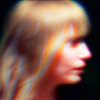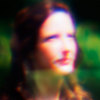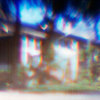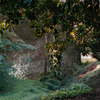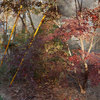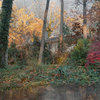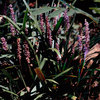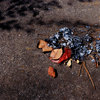A Conversation with CPC 2010 Winner Lydia McCarthy
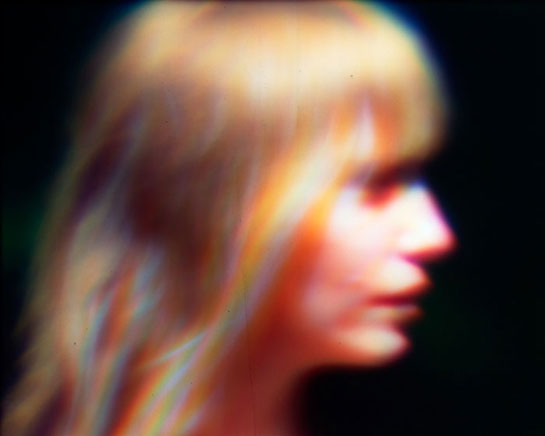
Lydia McCarthy is one of the winners of this year’s Conscientious Portfolio Competition. About her work, juror Elisabeth Biondi wrote: “In the course of a week, a month, a year I view many many photographs & much of it good photography. I always keep my eyes peeled for a surprise, either in content or style. Portraiture is an important part of my work, or better the work that I assign. It therefore is important in what visually I pursue. These portraits are different from anything I have seen before. They are impressionistic in a contemporary way. Looking at them puts me in a reflective tender frame of mind. Perhaps this is so because we always are looking for picture that might work for the fiction we publish. We try to pair pictures to words that express a mood rather than edge features into the reader’s mind. We want to let the mind wander. This is why I like these pictures.” In this following conversation, I talked with Lydia about her work. (more)
Jörg Colberg: Refraction is portraiture, but it’s not the kind of portraiture widely known. How did you come up with the idea?
Lydia McCarthy: The idea developed pretty organically. It began with me reconstructing an old 8x10 camera with a 4x5 film back, a magnifying sheet (or fresnel) and a homemade shutter. Most recently my work has been concerned with alternate realities existing within our everyday world, so I first used the camera to alter my immediate, suburban surroundings. These images didn’t seem like they were enough though; there was something missing. The fresnel lens distorts, refracts and softens and I was curious how it would render people. I also wanted to push myself to take pictures that are more difficult for me. It’s easy to photograph houses, but I tend to shy away from placing myself in situations where I feel vulnerable. This was a way for me to force myself to talk to people who I never would have in another context. After seeing the first images, I used historical portraiture to formally guide me and began investigating ideas of perception and desire.
JC: You write “For my subjects I choose people who I desire but do not know; people I believe to have characteristics I want to possess” and “I am not interested in who they really are, but in who I imagine them to be.” I’m a little bit curious how the process, since it would seem that you have an idea of what you want to see in the individual images before you take them. Or am I misunderstanding something here?
LM: I do have some idea of what I want to see in the individual images, or perhaps it would be more accurate to say in the subjects themselves. The people that I am photographing are people who I imagine to be quite different from myself-they are who I want to be. I think we all have a pretty skewed idea of how we appear to others - I know that I typically imagine people to see me as anxious, anti-social, awkward, etc. I am sure this isn’t true (or I hope that it’s not!) but I think it’s the opposite of these qualities that I am looking for in my subjects. I have always had the habit of observing people and creating all sorts of stories about who they are and what they’re like. This is a fascinating process to me, because it’s rare that I actually have anything to base this off of, except for brief interactions, but they can still produce a very real desire or longing within me. This longing is often for a sense of freedom. I am interested in how my perception of these people constitutes who they are for me. Maurice Merleu-Ponty said that,
“Another person, for us, is a spirit which haunts a body and we seem to see a whole host of possibilities contained within this body when it appears before us; the body is the very presence of these possibilities.”I understand this in relation to my own interactions with others, as well as in photographs of people. Andrey Tarkovsky’s polaroids of his wife and son in Russia are an excellent example of this. They are not just images of a woman and a boy, but seem to embody his physical and emotional relationship with them. They contain a “host of possibilities” and I am able to understand something about who they are through the photographs.
JC: So the portraits are really something you created for yourself (even though, of course, you want them to be seen by others), to say something about yourself - instead of something about the sitters?
LM: Definitely. They are more like self-portraits that focus on my desires and my perception. Using the fresnel camera distorts the subject’s features and removes some of the information that would normally identify who they are. It also gives them this spectrum glow that I impose on them. In a way, I am still saying that this is who they are, that this is about them, only it’s my interpretation of them. We know people-we relate to them-based on our own experiences. That is what I am interested in.
JC: For me, it’s pretty obvious that Refraction is photography, but for those sticking to photographic orthodoxy it probably is not. What do you say to people who tell you it’s not photography any longer (assuming, for a second, that this actually matters)?
LM: Hmmm, that’s tough. It would be really hard for me to imagine anyone having solid ground for that sort of argument! But let’s say that someone is arguing this with me…I would say that since photography’s invention experimentation has had an integral role in its history. William Fox Talbot’s botanical photograms are no less “drawing with light” than Atget’s Paris street scenes. I think that’s what so interesting to me-photography has the ability to harnesses information in a multitude of ways that we generally experience in one way through the lens of our eyes. The Vortograph of Ezra Pound by Alvin Langdon-Coburn in which he uses a multifaceted prism instead of a typical camera lens is just another way of recording information. When I use this fresnel, the white light that reflects off of my subjects is refracted. It’s just a different way of seeing.
JC: With this in mind, have we become too dogmatic, too restrictive when we think of photography, and our - common - insistence on photography reflecting “the facts”?
LM: I guess I’m not sure how dogmatic people are about photography anymore. Do they still insist that it represents “the facts”? For me, that is a myth that was dispelled a long time ago. But perhaps that’s because I’m actively involved work that doesn’t make that assumption. I know there is a fear in journalism that digital manipulation has the potential to jeopardizes the facts. But that is a pretty different realm than the one in which I am working. The impetus for my work is to access the world in modes we aren’t generally able to, so “the facts” are meant to be subverted. It seems that a lot of contemporary artists who work in photography are no longer as concerned with obtaining an objective view and take a much more open approach to the medium.
JC: Seeing the different projects in your portfolio and knowing your earliest work fairly well makes me think there is some sort of evolution from what might be called “straight” photography to something different, whatever we want to call it. Has your thinking about photography itself changed, or are all these changes merely reflecting the changes in how you think about what you want to show in your images?
LM: I believe it was a combination of both. During my undergraduate studies I worked with many photographers who I greatly admired and from who I learned an incredible amount, about picture taking, passion and the importance of remaining true to who you are and your vision. Most of the photographers I studied with used large-format camera’s and practiced “straight” photography. And I wasn’t really exposed to more experimental (for lack of a better word) methods of picture taking until after school. In addition to this, I feel that since that time I have grown considerably, both as a photographer and as a person. It’s become increasingly more important for me to have an all encompassing approach to photography-meaning that I incorporate more than just my knowledge of the medium itself. The brilliance of being an artist is that you can be so many other things at the same time. In fact, I think you have to be, or else you’re just making art about art, and that’s not interesting to me. I can mix together my interest in optics, philosophy, literature, painting, mysticism, hallucinations and use them to express very personal emotions. So my thinking about photography has changed along with what I want to convey through my images; these seemed to evolve simultaneously. However, I do think the core of my intention has always remained constant, and that is the hope that someone will be able to look at my work and experience a sense of recognition-that they too have felt the loneliness, desire for escape and longing for something more that I try to communicate.
JC: Do you think it’s important for a photographer to have wider interests? To not just look at photography (or other visual arts), but maybe literature or even mysticism like you do?
LM: I know it is very important for me, but I’m not sure I want to make a judgment like that. I don’t really know any artists who don’t have wider interests-whether they’re environmental, philosophical, scientific, spiritual etc. And the work that I respond to the strongest reveals those interests. Not in a heavy-handed sort of way, but I think if you are making work that is truly a part of you, those interests inevitably come through. I supposed, for me, it’s similar to the type people I want to have in my life. I am drawn to people who are multifaceted, passionate and who want to continue learning. In the same way, I want to experience art that is rich and challenging; art that contains a personal element and references something other than itself.
 By
By 